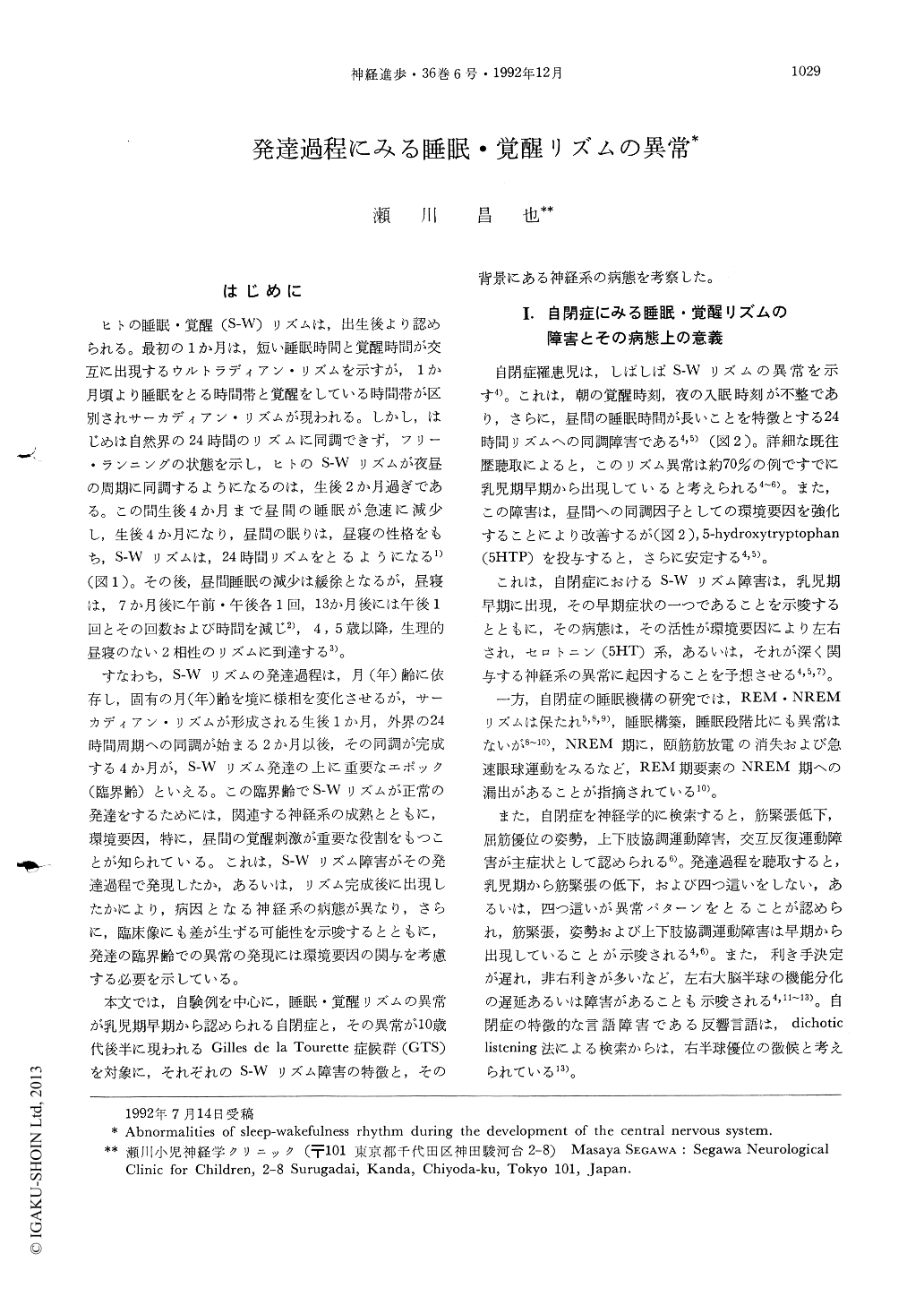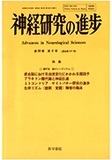Japanese
English
- 有料閲覧
- Abstract 文献概要
- 1ページ目 Look Inside
はじめに
ヒトの睡眠・覚醒(S-W)リズムは,出生後より認められる。最初の1か月は,短い睡眠時間と覚醒時間が交互に出現するウルトラディアン・リズムを示すが,1か月頃より睡眠をとる時間帯と覚醒をしている時間帯が区別されサーカディアン・リズムが現われる。しかし,はじめは自然界の24時間のリズムに同調できず,フリー・ランニングの状態を示し,ヒトのS-Wリズムが夜昼の周期に同調するようになるのは,生後2か月過ぎである。この間生後4か月まで昼間の睡眠が急速に減少し,生後4か月になり,昼間の眠りは,昼寝の性格をもち,S-Wリズムは,24時間リズムをとるようになる1)(図1)。その後,昼間睡眠の減少は緩徐となるが,昼寝は,7か月後に午前・午後各1回,13か月後には午後1回とその回数および時間を減じ2),4,5歳以降,生理的昼寝のない2相性のリズムに到達する3)。
すなわち,S-Wリズムの発達過程は,月(年)齢に依存し,固有の月(年)齢を境に様相を変化させるが,サーカディアン・リズムが形成される生後1か月,外界の24時間周期への同調が始まる2か月以後,その同調が完成する4か月が,S-Wリズム発達の上に重要なエポック(臨界齢)といえる。この臨界齢でS-Wリズムが正常の発達をするためには,関連する神経系の成熟とともに,環境要因,特に,昼間の覚醒刺激が重要な役割をもつことが知られている。これは,S-Wリズム障害がその発達過程で発現したか,あるいは,リズム完成後に出現したかにより,病因となる神経系の病態が異なり,さらに,臨床像にも差が生ずる可能性を示唆するとともに,発達の臨界齢での異常の発現には環境要因の関与を考慮する必要を示している。
Characteristics of abnormal sleep-wakefulness (S-W) cycle occurred during the development of the central nervous system were shown in those of early infantile autism (EIA) and of Gilles de la Tourette syndrome (GTS), and these pathophysiologies and pathognomonic meanings were discussed.
In EIA, not less than 70% of cases showed abnormal S-W cycle with failure to synchronize the 24 hours day-night cycle. This abnormality was improved by accentuating day time environmental stimulation and the improvement was consolidated by administration of 5-hydroxytryptophan. The adjustment of S-W cycle to the 24 hour day-night cycle preceded improvement of behavioral abnormalities of EIA; lack of social relatedness and insistence on sameness and the ages of the improvement of the cycle, The ages of improvement of S-W cycle were well correlated with those of determination of hand dominancy and development of verbal communications, both of which are delayed in EIA. This disturbances in S-W cycle seemed to develop in early infancy.

Copyright © 1992, Igaku-Shoin Ltd. All rights reserved.


